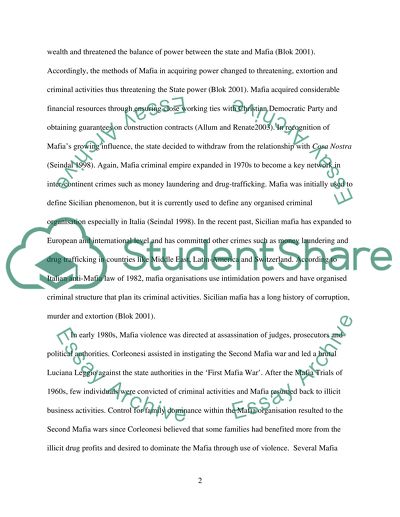Cite this document
(“What factors contributed in the stuggle against the Mafia in Sicily Essay”, n.d.)
What factors contributed in the stuggle against the Mafia in Sicily Essay. Retrieved from https://studentshare.org/history/1477811-what-factors-contributed-in-the-stuggle-against
What factors contributed in the stuggle against the Mafia in Sicily Essay. Retrieved from https://studentshare.org/history/1477811-what-factors-contributed-in-the-stuggle-against
(What Factors Contributed in the Stuggle Against the Mafia in Sicily Essay)
What Factors Contributed in the Stuggle Against the Mafia in Sicily Essay. https://studentshare.org/history/1477811-what-factors-contributed-in-the-stuggle-against.
What Factors Contributed in the Stuggle Against the Mafia in Sicily Essay. https://studentshare.org/history/1477811-what-factors-contributed-in-the-stuggle-against.
“What Factors Contributed in the Stuggle Against the Mafia in Sicily Essay”, n.d. https://studentshare.org/history/1477811-what-factors-contributed-in-the-stuggle-against.


